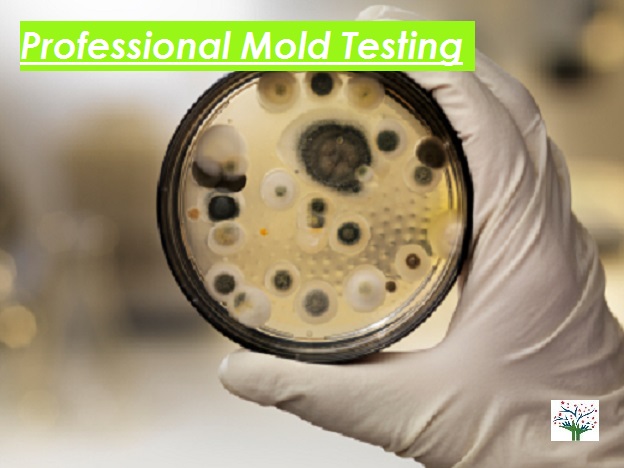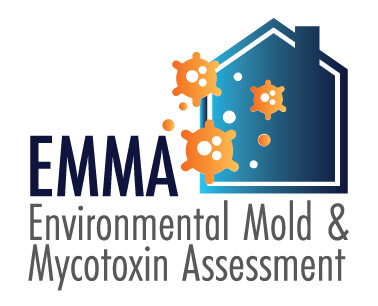How Mycotoxin testing Services Can Guard Your Products
How Mycotoxin testing Services Can Guard Your Products
Blog Article
Ensuring Conformity With Regulations: the Role of Mycotoxin Evaluating in Quality Assurance
Making sure conformity with rigid policies is vital for keeping food security, and the function of mycotoxin screening in quality control can not be overemphasized. Mycotoxins, harmful substances created by particular mold and mildews, position substantial health and wellness risks, making their discovery important in food manufacturing. Adherence to governing standards, such as those set by the FDA and EU, needs robust testing methods and innovations to recognize and quantify these pollutants. By executing thorough testing methods, business can prevent prospective wellness situations, stay clear of costly recalls, and keep consumer depend on. Nevertheless, the intricacies of these testing procedures increase essential questions concerning their efficiency and efficiency.
Recognizing Mycotoxins
Recognizing mycotoxins is essential to making sure the top quality and safety of farming products. Mycotoxins are toxic secondary metabolites generated by specific varieties of fungi, commonly found in foodstuffs such as seasonings, grains, and nuts. These substances can emerge at numerous stages of the food manufacturing process, from pre-harvest to storage, and posture substantial health risks to both people and animals (Mycotoxin testing Services). One of the most notorious mycotoxins consist of aflatoxins, fumonisins, ochratoxins, and trichothecenes, each linked with details fungal types and ecological problems.
The presence of mycotoxins in foodstuff can cause chronic and severe health and wellness issues, consisting of liver damages, immune suppression, and cancer causing results. Their detection and quantification are essential parts of quality control in agricultural and food industries. The intricacy of mycotoxin contamination necessitates a diverse strategy, employing innovative logical methods such as fluid chromatography, mass spectrometry, and enzyme-linked immunosorbent assays (ELISA) By recognizing the resources, types, and effects of mycotoxins, stakeholders in the agricultural field can much better apply preventative measures and minimize threats, ensuring safer consumption for end-users. This understanding creates the bedrock whereupon efficient mycotoxin monitoring techniques are constructed.
Governing Specifications for Mycotoxins
Having developed a fundamental understanding of mycotoxins and their effect on food safety and security, it is important to examine the regulative criteria governing their existence in agricultural items. Regulative criteria for mycotoxins are vital due to the fact that they specify permitted limitations, ensuring food security and safeguarding public health. Numerous international and nationwide companies have actually set these limitations based on detailed risk analyses.
The Codex Alimentarius Compensation, a worldwide body developed by the FAO and that, offers guidelines and optimum allowed degrees for various mycotoxins in food and feed. As an example, the Codex has actually set limits for aflatoxins in peanuts, maize, and dried figs, to name a few products. These criteria are typically embraced or adjusted by private nations to fit their particular needs.
In the European Union, Guideline (EC) No 1881/2006 stipulates optimum levels for numerous mycotoxins, such as aflatoxins, ochratoxin A, and deoxynivalenol, in numerous foodstuff. The United State Food and Medicine Management (FDA) has actually established action levels for mycotoxins like aflatoxins in products such as nuts and grains.
Adherence to these regulatory requirements is vital for maintaining market access, customer trust fund, and public health. Non-compliance can cause substantial financial losses and health and wellness risks, emphasizing the value of stringent mycotoxin testing methods.
Examining Approaches and Technologies

ELISA is commonly valued for its quick and image source cost-efficient testing capabilities, making it perfect for high-throughput settings. It relies upon antibodies to find details mycotoxins, giving cause a fairly short time structure. Nonetheless, its level of sensitivity may be restricted compared to much more sophisticated techniques.
HPLC, on the various other hand, masters offering measurable evaluation with high accuracy and precision. It separates intricate mixes into specific components, making it extremely reliable for recognizing and quantifying several mycotoxins concurrently - Mycotoxin testing Services. This strategy, while extra resource-intensive and lengthy than ELISA, uses a higher degree of integrity

LC-MS represents the peak of analytical uniqueness and sensitivity. Incorporating the splitting up power of liquid chromatography with the detection abilities of mass spectrometry, LC-MS can identify also trace degrees of mycotoxins. This method is essential for confirming the presence of mycotoxins in forensic and governing contexts, guaranteeing conformity with rigorous security standards.
Implementing Evaluating Procedures

Integrating these advanced screening methods right into a detailed quality control structure demands a well-structured approach to carrying out testing protocols. To achieve this, organizations should first conduct a thorough danger assessment to determine possible mycotoxin contamination points within the supply chain. This analysis notifies the advancement of a customized testing method that deals with particular susceptabilities.
Following, developing standard sampling treatments is critical. Regular tasting ensures that test results are reputable YOURURL.com and rep of the whole set (Mycotoxin testing Services). Abiding by standards from regulatory bodies, such as the FDA or EFSA, helps preserve compliance and boosts the trustworthiness of the screening procedure
Educating workers is one more crucial element. Personnel has to be skillful in both example collection and the operation of testing tools. Normal training sessions and qualification programs can ensure that staff member remain upgraded with the most current methods and governing modifications.
Advantages of Mycotoxin Evaluating
Mycotoxin screening supplies countless benefits that dramatically improve the security and high quality of food and feed products. Primarily, it functions as a vital control step to stop infected goods from reaching the customer market, thereby guarding public health and wellness. By identifying and measuring mycotoxins such as ochratoxins, aflatoxins, and fumonisins, manufacturers can make sure that their items meet rigorous regulative criteria, therefore avoiding possible lawful consequences and associated prices.
In addition, mycotoxin testing contributes to the financial stability of food and feed sectors by lessening the threat of large-scale item recalls. The capability to separate and detect polluted batches early in the manufacturing procedure decreases waste and stops the economic losses associated with damaged brand track record. Furthermore, it fosters consumer depend on and commitment, as clients are increasingly conscious of food safety problems and need better requirements.
The application of normal mycotoxin screening additionally advertises ideal practices within agricultural and manufacturing markets. By sticking to extensive testing why not try here procedures, companies can maximize their high quality control procedures, improve operational efficiency, and guarantee the consistent production of safe, premium products. In conclusion, the benefits of mycotoxin screening are complex, adding to public health and wellness, financial security, and sector integrity.
Final Thought
Mycotoxin screening is critical in guaranteeing compliance with regulative criteria, thereby keeping food safety and quality assurance. By systematically spotting dangerous mycotoxins, this technique helps reduce health risks, prevent lawful consequences, and prevent monetary losses related to product remembers. Applying robust screening procedures promotes consumer depend on and self-confidence in food safety and security methods, inevitably supporting the integrity and online reputation of food businesses. Hence, mycotoxin screening remains an indispensable component of contemporary food safety and security administration systems.
Making sure conformity with stringent policies is vital for keeping food safety and security, and the duty of mycotoxin testing in quality control can not be overstated.In the world of mycotoxin screening, progressed approaches and technologies are critical in guaranteeing food security and regulative conformity.Mycotoxin screening supplies numerous benefits that considerably improve the security and high quality of food and feed items.Mycotoxin screening is important in ensuring compliance with regulatory criteria, therefore keeping food safety and security and high quality control. Therefore, mycotoxin testing remains a vital element of contemporary food safety management systems.
Report this page